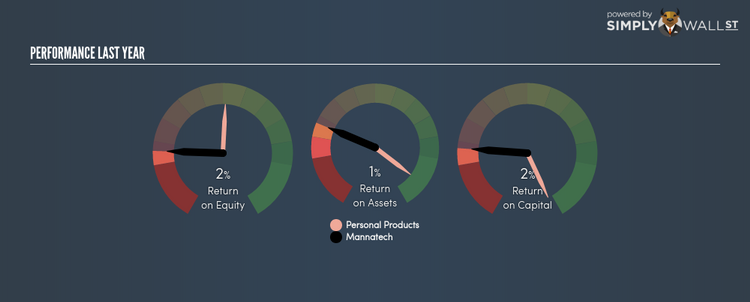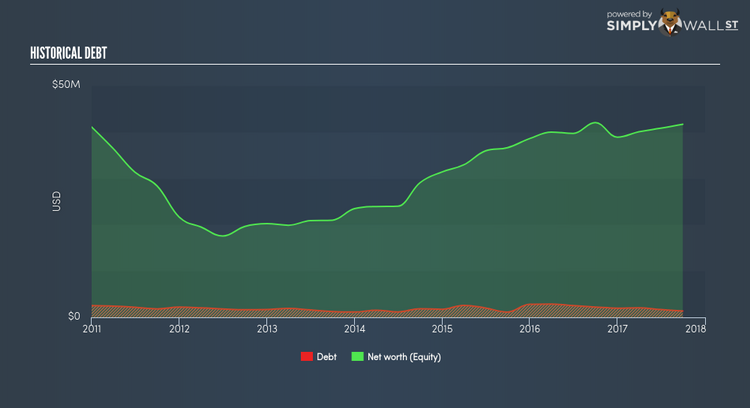What You Must Know About Mannatech Incorporated’s (NASDAQ:MTEX) Return on Equity

Mannatech Incorporated (NASDAQ:MTEX) generated a below-average return on equity of 1.91% in the past 12 months, while its industry returned 16.48%. Though MTEX’s recent performance is underwhelming, it is useful to understand what ROE is made up of and how it should be interpreted. Knowing these components can change your views on MTEX’s below-average returns. Metrics such as financial leverage can impact the level of ROE which in turn can affect the sustainability of MTEX’s returns. Let me show you what I mean by this. View our latest analysis for Mannatech
Breaking down ROE — the mother of all ratios
Firstly, Return on Equity, or ROE, is simply the percentage of last years’ earning against the book value of shareholders’ equity. It essentially shows how much the company can generate in earnings given the amount of equity it has raised. In most cases, a higher ROE is preferred; however, there are many other factors we must consider prior to making any investment decisions.
Return on Equity = Net Profit ÷ Shareholders Equity
ROE is assessed against cost of equity, which is measured using the Capital Asset Pricing Model (CAPM) – but let’s not dive into the details of that today. For now, let’s just look at the cost of equity number for Mannatech, which is 8.49%. Since Mannatech’s return does not cover its cost, with a difference of -6.59%, this means its current use of equity is not efficient and not sustainable. Very simply, Mannatech pays more for its capital than what it generates in return. ROE can be split up into three useful ratios: net profit margin, asset turnover, and financial leverage. This is called the Dupont Formula:
Dupont Formula
ROE = profit margin × asset turnover × financial leverage
ROE = (annual net profit ÷ sales) × (sales ÷ assets) × (assets ÷ shareholders’ equity)
ROE = annual net profit ÷ shareholders’ equity
The first component is profit margin, which measures how much of sales is retained after the company pays for all its expenses. Asset turnover reveals how much revenue can be generated from Mannatech’s asset base. The most interesting ratio, and reflective of sustainability of its ROE, is financial leverage. Since financial leverage can artificially inflate ROE, we need to look at how much debt Mannatech currently has. The debt-to-equity ratio currently stands at a low 3.34%, meaning Mannatech still has headroom to borrow debt to increase profits.
What this means for you:
Are you a shareholder? MTEX exhibits a weak ROE against its peers, as well as insufficient levels to cover its own cost of equity this year. However, investors shouldn’t despair since ROE is not inflated by excessive debt, which means MTEX still has room to improve shareholder returns by raising debt to fund new investments. If you’re looking for new ideas for high-returning stocks, you should take a look at our free platform to see the list of stocks with Return on Equity over 20%.
Are you a potential investor? If you are considering investing in MTEX, looking at ROE on its own is not enough to make a well-informed decision. I recommend you do additional fundamental analysis by looking through our most recent infographic report on Mannatech to help you make a more informed investment decision.
To help readers see pass the short term volatility of the financial market, we aim to bring you a long-term focused research analysis purely driven by fundamental data. Note that our analysis does not factor in the latest price sensitive company announcements.
The author is an independent contributor and at the time of publication had no position in the stocks mentioned.


